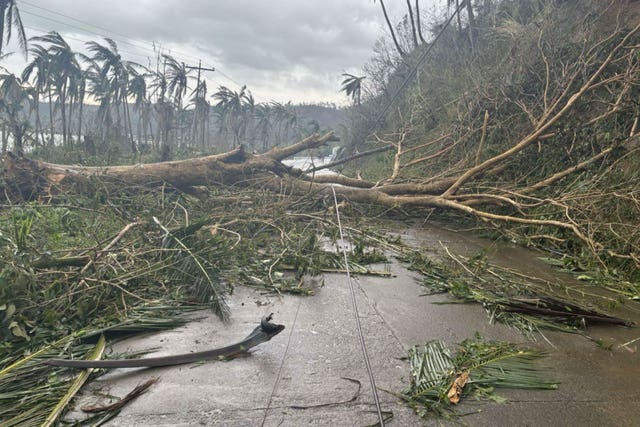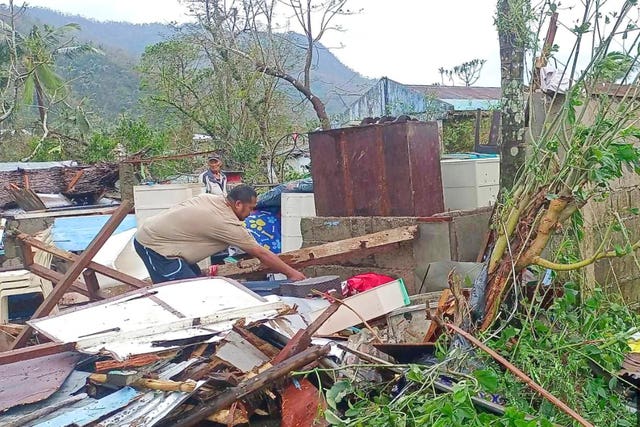Hundreds of thousands of people flee as latest typhoon batters the Philippines
President Ferdinand Marcos Jr had asked his Cabinet and provincial officials to brace for ‘the worst-case scenario’.

A powerful typhoon wrecked houses, caused towering tidal surges and forced hundreds of thousands of people to flee to emergency shelters as it cut across the northern Philippines on Sunday in the sixth major storm to hit the country in less than a month.
Typhoon Man-yi slammed into the eastern island province of Catanduanes on Saturday night with sustained winds of up to 125 miles per hour and gusts of up to 149mph.
The country’s weather agency warned of a “potentially catastrophic and life-threatening situation” in provinces along its path.
There were no immediate reports of casualties from the typhoon, which was forecast to blow north-westwards on Sunday across northern Luzon, the archipelago’s most populous region.

The capital region of metropolitan Manila would probably be spared from a direct hit but was placed, along with outlying regions, under storm alerts and warned of dangerous coastal storm surges.
“The rain was minimal, but the wind was very strong and had this eerie howling sound,” Roberto Monterola, a disaster-mitigation officer in Catanduanes, told the Associated Press.
“Along a main boulevard here, the tidal surges went up to more than seven metres (23 feet) near the seaside houses. It looked really scary.”
The entire province of Catanduanes had no power after the typhoon knocked down trees and electricity posts, and disaster-response teams were checking how many more houses were damaged in addition to those impacted by previous storms, he said.
“We need tin roofs and other construction materials, aside from food. Villagers tell us here that they still haven’t gotten up from the past storm and were pinned down again by this typhoon,” Mr Monterola said.
Nearly half of the island province’s 80,000 people were sheltering in evacuation centres.
Catanduanes officials were so concerned as the typhoon approached that they threatened vulnerable villagers with arrest if they did not follow orders to evacuate to safer grounds.

More than 750,000 people took refuge in emergency shelters, including churches and a shopping centre, due to Man-yi and two previous storms mostly in the northern Philippines, officials said.
The rare number of back-to-back storms and typhoons that lashed Luzon in just three weeks left more than 160 people dead, affected nine million people and caused such extensive damage to residential communities, infrastructure and farmlands that the Philippines may have to import more rice, a staple food for most Filipinos.
In an emergency meeting as Man-yi approached, president Ferdinand Marcos Jr asked his Cabinet and provincial officials to brace for “the worst-case scenario”.
At least 26 domestic airports and two international airports were temporarily shut and inter-island ferry and cargo services were suspended due to rough seas, stranding thousands of passengers and commuters, according to the Civil Aviation Authority of the Philippine and the coast guard.
The United States, Manila’s treaty ally, along with Singapore, Malaysia, Indonesia and Brunei provided cargo aircraft and other storm aid to augment the government’s overwhelmed disaster-response agencies.
Last month, the first major storm, Trami, left scores of people dead after dumping one to two months’ worth of rain in just 24 hours in several towns.
The Philippines is battered by about 20 typhoons and storms each year. It is often hit by earthquakes and has more than a dozen active volcanoes, making it one of the world’s most disaster-prone countries.





